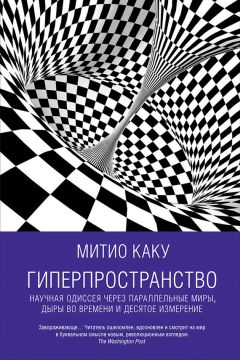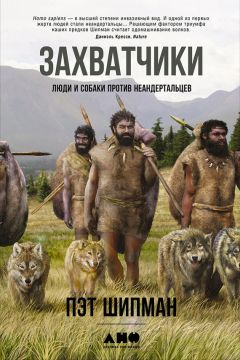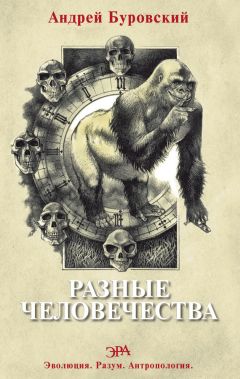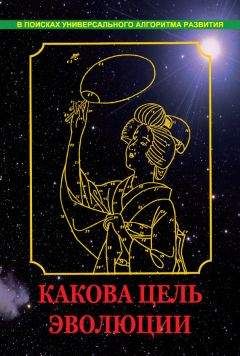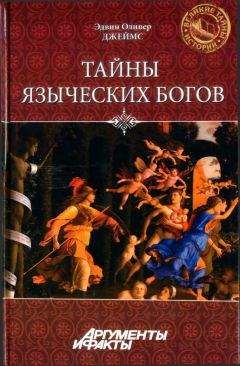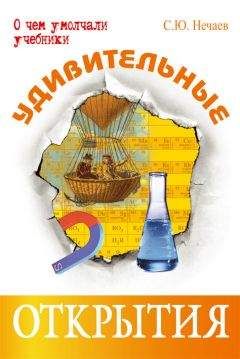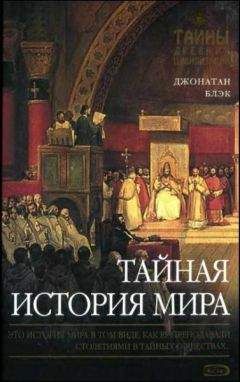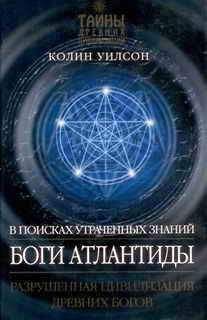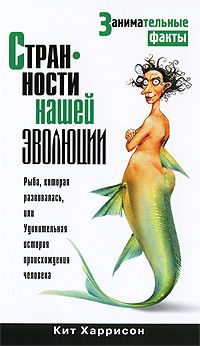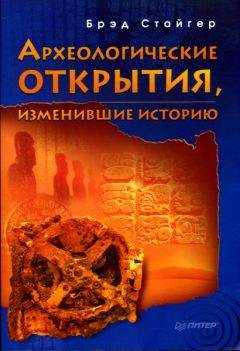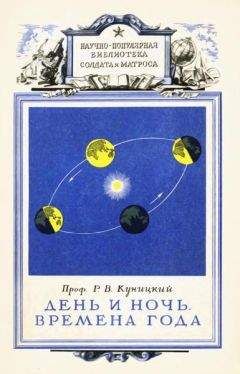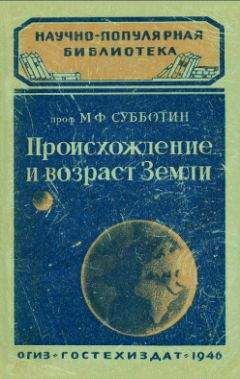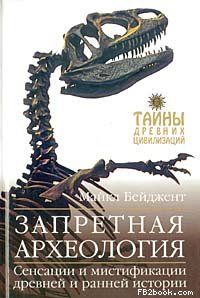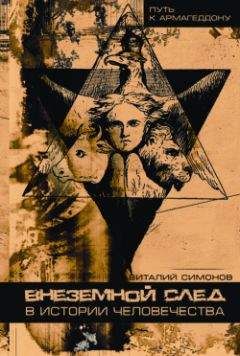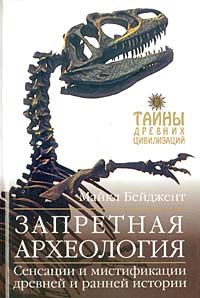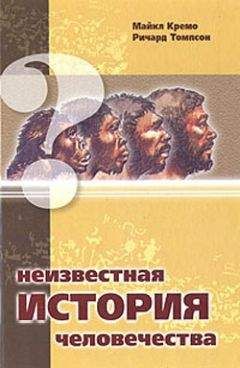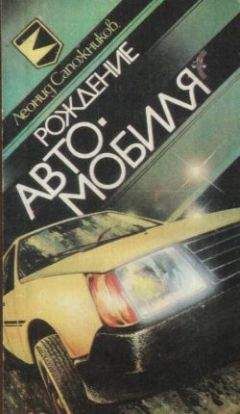Леонид Вишняцкий - Неандертальцы: история несостоявшегося человечества
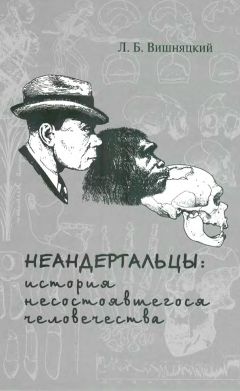
Скачивание начинается... Если скачивание не началось автоматически, пожалуйста нажмите на эту ссылку.
Жалоба
Напишите нам, и мы в срочном порядке примем меры.
Описание книги "Неандертальцы: история несостоявшегося человечества"
Описание и краткое содержание "Неандертальцы: история несостоявшегося человечества" читать бесплатно онлайн.
Неандертальцы не были нашими прямыми предками, но тем не менее они наши ближайшие родственники, и у нас с ними очень много общего. Называть их тупиковой ветвью эволюции, по мнению автора этой книги, столь же неверно, как неверно применять этот эпитет по отношению, скажем, к коренному населению Тасмании и другим первобытным популяциям людей, уничтоженным в результате европейской колонизации. Скорее, неандертальцев следует считать «дублёрами» гомо сапиенс, запасным вариантом антропогенеза. Почему же история выбрала нас, а не их? Как происходил этот выбор? Что сыграло в нём решающую роль? Был ли он предопределен заранее или зависел больше от привходящих и потому во многом случайных обстоятельств?
Автор рассматривает эти и многие другие вопросы, попутно суммируя и в доступной для неспециалистов форме излагая то, что известно сейчас о происхождении и эволюционной истории неандертальцев, их умственных и языковых способностях, материальной и зарождавшейся духовной культуре, о динамике их расселения и причинах вымирания. По каждой из перечисленных тем учтены наиболее интересные и важные сведения, имевшиеся в распоряжении палеоантропологии, археологии и смежных с ними наук на середину 2010 г.
Книга адресована всем, кого занимает древнейшее прошлое человечества — от академиков до студентов и школьников старших классов.
Harvati K. The Neanderthal taxonomic position: models of intra- and inter-specific craniofacial variation // JHE. 2003b. N 44. P. 107–132.
Harvati K. Neanderthals and their contemporaries // W. Henke and I. Tattersall (eds). Handbook of Paleoanthropology, vol. 3. Berlin; Heidelberg; New York: Springer, 2007. P. 1717–1748.
Harvati K., Frost S. R., McNulty K. P. Neanderthal taxonomy reconsidered: Implications of 3D primate models of intra- and interspecific differences // PNAS. 2004. N 101. P. 1147–1152.
Harvati K., Gunz P., Nicholson E. A 3D look at the Tabun C2 jaw // TN. 2006. N 2. P. 117.
Hawks J. Selection on mitochondrial DNA and the Neanderthal problem // K. Harvati, T. Harrison (eds). Neanderthals Revisited: New Approaches and Perspectives. Dordrecht: Springer, 2006. P. 221–237.
Hawks J., Cochran G. Dynamics of adaptive introgression from archaic to modern humans // PA. 2006. P. 101–115.
Hawks J., Wolpoff M. H. The accretion model of Neandertal evolution // Evolution. 2001. N 55. P. 1474–85.
Hayden B. The cultural capacities of Neandertals: a review and evaluation // JHE. 1993. N 24. P. 113–146.
Hebsgaard M. B., Wiuf C., Thomas M., Gilbert P., Glenner H., Willerslev E. Evaluating neanderthal genetics and phylogeny // JME. 2007. N 64. P. 50–60.
Heim J.-L. Les hommes fossiles de La Ferrassie (Dordogne) et le problème de la définition des Neánderthaliens classiques // L’Anthropologie. 1974. N 78. P. 312–78.
Heim J.-L. La nouvelle reconstitution du crâne néandertalien de la Chapelle-aux-Saints. Méthode et résultats // BMSAP. 1990. N 1. P. 95–118.
Heim J.-L., Boë L.-J., Abry C. La parole à la portée du conduit vocal de l’homme de Neandertal. Nouvelles recherches, nouvelles perspectives // CRP 1. 2002. P. 129–134.
Henneberg M. Decrease of human skull size in the Holocene // HB 60. 1988. P. 395–405.
Henry A. G., Piperno D. Plants in Neanderthal diet: Plant microfossil evidence from the dental calculus of Shanidar III // PA. 2008. A11–A12.
Hernández Fernández M. Rodent paleofaunas as indicators of climatic change in Europe during the last 125,000 years // QR. 2006. N 65. P. 308–323.
Herrera K. J., Somarelli J. A., Lowery R. K., Herrera R. J. To what extent did Neanderthals and modern humans interact? // BR. 2009. N 84. P. 245–257.
Higham T. Revised direct radiocarbon dating of the Vindija G1 Upper Paleolithic neandertals // PNAS. 2006. N 103. P. 553–557.
Higgins R. Reassessing Neanderthal locomotor efficiency on a non-plain terrain // AJPA. 2010. N 141 (Supplement 50). P. 127–128.
Hockett B., Haws J. A. Nutritional ecology and the human demography of Neandertal extinction // QI 137. 2005. P. 21–34.
Hofreiter M., Stewart J. Ecological change, range fluctuations and population dynamics during the Pleistocene // CB 19. 2009. R584–R594.
Holliday T. W. Postcranial evidence of cold adaptation in European Neanderthals // AJPA 104. 1997. P. 245–258.
Holliday T. W. Neanderthals and modern humans: an example of a mammalian syngameon? // K. Harvati and T. Harrison (eds). Neanderthals Revisited: New Approaches and Perspectives. Dordrecht: Springer, 2006. P. 281–297.
Holloway R. L. The poor brain of Homo sapiens neanderthalensis: see what you please… // Delson E. (ed). Ancestors: The hard evidence. New York: Alan R. Liss, 1985. P. 319–324.
Holloway R. L., Broadfield D. C., Yuan M. S. Brain Endocasts: The Paleoneurological Evidence. (The Human Fossil Record, vol. III). Hoboken, N. J.: Wiley & Sons, 2004.
Holloway R. L. Brain fossils: Endocasts // L. R. Squire (ed). Encyclopedia of Neuroscience. Oxford: Academic Press, 2009. P. 353–361.
Holton N. E., Franciscus R. G. The paradox of a wide nasal aperture in cold adapted Neandertals: a casual assessment // JHE. 2008. N 55. P. 942–951.
Horan R. D., Bulte E., Shogren J. F. How trade saved humanity from biological exclusion: an economic theory of Neanderthal extinction // JEBO. 2005. N 58. P. 1–29.
Houghton P. Neandertal supralaryngeal vocal tract // AJPA. 1993. N 90. P. 139–146.
Howell F. C. The place of Neanderthal Man in human evolution // AJPA. 1951. N 9. P. 379–416.
Howell F. C. Pleistocene glacial ecology and the evolution of “classic” Neandertal man // SJA. 1952. N 8. P. 377–410.
Howell F. C. The evolutionary significance of variation and varieties of «Neanderthal» man // QRB. 1957. N 32. P. 330–347.
Howells W. W. Neanderthals: names, hypotheses, and scientific method // AA. 1974. N 76. P. 24–38.
Hrdlička A. The Neanderthal phase of man // JRAI. 1927. N 57. P. 249–274.
Hubbe M., Hanihara T., Harvati K. Climate signatures in the morphological differentiation of worldwide modern human populations // AR. 2009. N 292. P. 1720–1733.
Hublin J.-J. Quelques caractères apomorphes du crâne néandertalien et leur interpretation phylogenetique // CRASP. 1978. N 287. P. 923–926.
Hublin J.-J. Caractères dérivés de la région occipito-mastoïdienne chez les Néandertaliens // E. Trinkaus (ed). L’Homme de Néandertal. Vol. 3. L’Anatomie. Liège: ERAUL. 1988. P. 67–73.
Hublin J.-J. Climatic changes, paleogeography and the evolution of Neanderthals // T. Akazawa, K. Aoki, O. Bar-Yosef (eds). Neanderthals and Modern Humans in Western Asia. New York: Plenum Press, 1998. P. 295–310.
Hublin J.-J. Modern-nonmodern hominid interactions: A Mediterranean perspective // O. Bar-Yosef and D. Pilbeam (eds). The Geography of Neandertals and Modern Humans in Europe and the Greater Mediterranean. Cambridge: Harvard University Press, 2000. P. 157–182.
Hublin J.-J. Neandertal as another humankind: where are we now? // TN. 2006. N 2. P. 55–59.
Hublin J.-J. Origine et évolution des Néandertaliens // B. Vandermeersch, B. Maureille (dir). Les Néandertaliens. Biologie et cultures. Paris: Éditions du CTHS, 2007. P. 95–107.
Hublin J.-J. The origin of Neandertals // PNAS. 2009. N 106. P. 16022–16027.
Hublin J.-J., Bailey S. E. Revisiting the last Neandetals // N. J. Conard (ed). When Neanderthals and Modern Humans Met. Tubingen: Kerns Verlag, 2006. P. 105–128.
Hublin J.-J., Weston D., Gunz P., Richards M., Roebroeks W., Glimmerveen J., Anthonis L. Out of the North Sea: the Zeeland Ridges Neandertal // JHE. N 57. 2009. P. 777–785.
Humphrey N. Cave art, autism, and the evolution of the human mind // CAJ. 1998. N 8. P. 165–191.
Hutchinson D. L., Larsen C. S., Choi I. Stressed to the max? Physiological perturbation in the Krapina Neandertals // CAn. 1997. N 38. P. 904–914.
Huxley T. H. Further remarks upon the human remains from the Neanderthal // NHR 1. 1864. P. 429–446.
Inizan M.-L., Roche H., Tixier J. Technology of Knapped Stone. Meudon: C. R. E. P., 1992.
Jaubert J., Maureille B., Turq A. A Stratigraphic and chronological revision of Neanderthal burials in Western Europe: Chronicle of a long-awaited aging // PA. 2010. A16.
Jelinek J. Neanderthal Man and Homo sapiens in Central and Eastern Europe // CAn. 1969. N 10. P. 475–503.
Jolly C. J. A proper study for mankind: Analogies from papionin monkeys and their implications for human evolution // YPA. 2001. N 44. P. 177–204.
Johanson D., Edgar B. From Lucy to Language. New York: A Peter N. Nevraumont Book/Simon & Schuster, 1996.
Jones M. Moving North: Archaeobotanical evidence for plant diet in Middle and Upper Paleolithic Europe // J.-J. Hublin, M. P. Richards (eds). The Evolution of Hominin Diets: Integrating Approaches to the Study of Palaeolithic Subsistence. Springer, 2009. P. 171–180.
Jones S. C. The Toba supervolcanic eruption: Tephra-fall deposits in India and paleoanthropological implications // M. D. Petraglia, B. Allchin (eds). The Evolution and History of Human Populations in South Asia. New York: Springer, 2007. P. 173–200.
Kay R. F., Cartmill M., Balow M. The hypoglossal canal and the origin of human vocal behavior // PNAS. 1998. N 95. P. 5417–5419.
Kelly R. L. The Foraging Spectrum. Diversity in Hunter-Gatherer Lifeways. Washington: Smithsonian Institution Press, 1995.
Kimbel W. H. The species and diversity of Australopiths // Handbook of Paleoanthropology, vol. 3. Berlin; Heidelberg; New York: Springer, 2007. P. 1539–1573.
King W. The reputed fossil man of the Neanderthal // QJS. 1864. N 1. P. 88–97.
Kitchen A., Toups M. A., Light J. E., Reed D. L. Genetic analysis of human head and clothing lice indicates an early origin of clothing use in archaic hominins // AJPA. 2010. N 141 (Supplement 50). P. 143–144.
Kittler R., Kayser M., Stoneking M. Molecular evolution of Pediculus humanus and the origin of clothing // CB. 2003. N 13. P. 1414–1417.
Klaatsch H. Der Werdegang der Menschheit und die Entstehung der Kultur. Berlin: Deutsches Verlagshaus Bong und Co, 1920.
Klein R. G. The Human Career. Human Biological and Cultural Origins. Chicago/London: University of Chicago Press, 1989.
Klein R. G. The archaeology of modern human origins // EA. 1992. N 1. P. 5–14.
Klein R. G. Anatomy, behavior, and modern human origins // JWP. 1995. N 9. P. 167–198.
Klein R. G. Southern Africa and modern human origins // Journal of Anthropological Research. 2001. N 57. P. 1–16.
Klein R. G. Out of Africa and the evolution of human behavior // EA. 2008. N 17. P. 267–281.
Koenigswald G. H. R. (ed). Hundert Jahre Neanderthaler. Cologne; Graz: Böhlau-Verlag, 1958.
Koller J., Mania D. High-tech in the Middle Paleolithic: Neanderthal-manufactured pitch identified // EJA. 2001. N 4. P. 385–397.
Krantz G. S. A reappraisal of neandertal taxonomy // J. L. Franzen (ed). 100 Years of Pithecanthropus. The Homo Erectus Problem. Frankfurt: E. Schweizerbart, 1994. P. 327–331.
Krause J., Lalueza-Fox C., Orlando L., Enard W., Green R. et al. The derived FOXP2 variant of modern humans was shared with Neandertals // CB. 2007a. N 17. P. 1–5.
Krause M., Orlando L., Serre D., Viola B. et al. Neanderthals in central Asia and Siberia // Nature. 2007b. N 449. P. 902–904.
Kuhn S. L., Stiner M. C. What’s a mother to do? The division of labor among Neandertals and modern humans in Eurasia // CAn. 2006. N 47. P. 953–980.
Lahr M. M., Foley R. A. Towards a theory of modern human origins: geography, demography, and diversity in recent human evolution // YPA. 1998. N 41. P. 137–176.
Laitman J. T., Heimbuch R. C., Crelin E. S. Developmental change in a basicranial line and its relationship to the upper respiratory system in living primates // AJA. 1978. N 152. P. 467–482.
Lalueza-Fox C. Mitochondrial DNA of an Iberian Neandertal suggests a population affinity with other European Neandertals // CB. 2006. N 16. P. 629–630.
Lalueza-Fox C., Römpler H., Caramelli D., Stäubert C., Catalano G., Hughes D., Rohland N., Pilli E., Longo L., Condemi S., de la Rasilla M., Fortea J., Rosas A., Stoneking M., Schöneberg T., Bertranpetit J., Hofreiter M. A melanocortin 1 receptor allele suggests varying pigmentation among Neanderthals // Science. 2007. N 318. P. 1453–1455.
Layton R., Barton R. Warfare and human social evolution // K. J. Fewster, M. Zvelebil (eds). Ethnoarchaeology of Hunter-Gatherers: Pictures at an Exhibition. Oxford: Archaeopress, 2001. P. 13–24.
Lebel S., Trinkaus E., Faure M., Fernandez P., Guérin C., Richter D., Mercier N., Valladas H., Wagner G. A. Comparative morphology and paleobiology of Middle Pleistocene human remains from the Bau de l’Aubesier, Vaucluse, France // PNAS. 2001. N 98. P. 11097–11102.
Lee S.-H., Wolpoff M. The pattern of evolution in Pleistocene human brain size // Paleobiology. 2003. N 29. P. 186–196.
Leonard W. R., Snodgrass J. J., Sorensen M. V. Metabolic adaptation in indigenous Siberian populations // ARA. 2005. N 34. P. 451–471.
Lev E., Kislev M. E., Bar-Yosef O. Mousterian vegetal food in Kebara Cave, Mt. Carmel // JAS. 2005. N 32. P. 475–484.
Lewin R. Human Evolution: An Illustrated Introduction. 5th ed. Malden; Oxford; Carlton: Blackwell, 2005.
Lewin R., Foley R. A. Principles of Human Evolution. 2nd ed. Malden; Oxford; Carlton: Blackwell, 2004.
Lieberman P. Current views on Neanderthal speech capabilities: A reply to Boë et al. // JP. 2007a. N 35. P. 552–563.
Lieberman P. Human speech: anatomical and neural bases // Can. 2007b. N 48. P. 39–66.
Lieberman P., Crelin E. S. On the speech of Neandertal man // LI. 1971. N 2. P. 203–222.
Liu H., Prugnolle F., Manica A., Balloux F. A geographically explicit genetic model of worldwide human-settlement history // AJHG. 2006. N 79. P. 230–237.
Lukács B. The lapedo child, the szeleta men, and the convergence to leading cultures // http://www.rmki.kfki.hu/~lukacs/lapedo.html. 2001.
Macaulay V., Hill C., Achilli A., Rengo C., Clarke D., Meehan W., Blackburn J., Semino O., Scozzari R., Cruciani F., Taha A., Shaari N. K., Raja J. M., Ismail P., Zainuddin Z., Goodwin W., Bulbeck D., Bandelt H.-J., Oppenheimer S., Torroni A., Richards M. Single, rapid coastal settlement of Asia revealed by analysis of complete mitochondrial genomes // Science. 2005. N 308. P. 1034–1036.
Подписывайтесь на наши страницы в социальных сетях.
Будьте в курсе последних книжных новинок, комментируйте, обсуждайте. Мы ждём Вас!
Похожие книги на "Неандертальцы: история несостоявшегося человечества"
Книги похожие на "Неандертальцы: история несостоявшегося человечества" читать онлайн или скачать бесплатно полные версии.
Мы рекомендуем Вам зарегистрироваться либо войти на сайт под своим именем.
Отзывы о "Леонид Вишняцкий - Неандертальцы: история несостоявшегося человечества"
Отзывы читателей о книге "Неандертальцы: история несостоявшегося человечества", комментарии и мнения людей о произведении.





